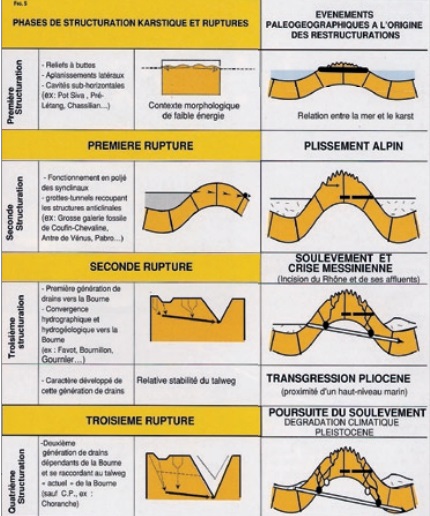An Overview of the Current Research Carried Out in the French Western Alps Karsts
DOI:
https://doi.org/10.3986/ac.v33i1.313Povzetek
Tekoče raziskave na podlagi geomorfologije kažejo napredovanje pri preučevanju kraških struktur, katerih začetek sega v gornji Miocen. K poznavanju krasa Zahodnih Alp so pripomogle sistematične analize na podlagi geomorfologije. Pri tem veliko koristi »imunost krasa«, ki ohranja stare prevodne strukture in njihovo zvezo s sedimenti. Kapniki kažejo na očitno povezavo z vegetacijo, v njih pa se lahko odražajo tudi geomorfološke krize. Klastični sedimenti odkrivajo mehansko erozijo. Na podlagi geomorfološkega pristopa je mogoče ugotoviti nastanek krasa in jam, kar vključuje razvojne stadije ter značilnosti okolja in procesov. Raziskovalci ponovno tehtajo prevladujočo vlogo, ki so jo včasih pripisovali ledenikom. Kras se pojavi takoj, ko nastane gradient in ko je z vodonosnika odstranjen neprepustni pokrov. Take okoliščine so bile že v zgornjem Miocenu in včasih celo prej. Na kras pleistocenske starosti je mogoče najti le v notranjih Alpah, kjer je bil ta pokrov odstranjen kasneje. Navpični sistemi, sestavljeni iz vrste brezen, so stari in postajajo vedno bolj kompleksni. primeri s terena zavračajo Fordovo klasifi kacijo, ki jim pripisuje nastanek v globoki freatični coni. Kratek pregled sedanjega stanja poznavanja tako ozemelj kot znanstvene snovi, ki jo raziskujejo, dovoljuje oceno napredka v zadnjem desetletju. Iz tega se tudi kaže neenakost med Severnimi in Južnimi Zahodnimi Alpami, kjer se Vercors izkaže za eno izmed najbolje preučenih planot v Alpah.
Current research encloses karst systems geomorphologic approach, recent advances in study of karst structures which date back from the Upper Miocene. Karst genesis in Western Alps is brought up by systemic analysis, according to a geomorphologic approach. It uses the “karst immunity” that conserves old drainage structures and their associated sediments. Karst landscapes can be sorted into horizontal and vertical forms. Speleothems are clearly connected to the presence of vegetation but they also record geomorphic crisis. Clastic sediments reveal mechanical erosion. This approach concludes with karst genesis and speleogenesis reconstruction, which blend together evolution stages, environment characterization and processes. Researchers reconsider the preponderant part previously attributed to glaciers. Karst appears immediately when a gradient exists and when the aquifer is stripped of its impervious cover. Such conditions occurred from the Upper Miocene and sometimes before. Karsts of the Pleistocene age are only met in the Inner Alps where cover stripping occurred later. Vertical systems composed of shaft series are old and become more complex. Field evidence refutes FORDʼs classifi cation, which assigns a deep phreatic origin. A brief account of the present state of knowledge, according to region and researcherʼs scientifi c themes, allows establishing the last decadeʼs advances. It also shows a disparity between the North and the South Western Alps, where Vercors appears to be one of the best studied massifs in the Alps.
Prenosi

Prenosi
Objavljeno
Kako citirati
Številka
Rubrike
Licenca
Avtorji jamčijo, da je delo njihova avtorska stvaritev, da v njem niso kršene avtorske pravice tretjih oseb ali kake druge pravice. V primeru zahtevkov tretjih oseb se avtorji zavezujejo, da bodo varovali interese založnika ter da bodo povrnili morebitno škodo.
Podrobneje v rubriki: Prispevki




